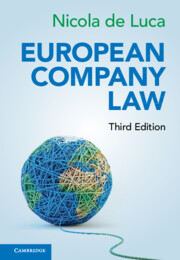Refine search
Actions for selected content:
37953 results in Cambridge Textbooks
The Cambridge Introduction to Sumerian
- Coming soon
-
- Expected online publication date:
- August 2026
- Print publication:
- 31 August 2026
-
- Textbook
- Export citation
Computer Networks
- An Algorithmic Approach
- Coming soon
-
- Expected online publication date:
- July 2026
- Print publication:
- 01 May 2027
-
- Textbook
- Export citation

Constitutional Law in Contemporary America
- Institutions, Politics, and Processes
- Coming soon
-
- Expected online publication date:
- July 2026
- Print publication:
- 31 July 2026
-
- Textbook
- Export citation
Dependency Politics
- How Foreign Aid Shapes Electoral Behavior
- Coming soon
-
- Expected online publication date:
- July 2026
- Print publication:
- 31 July 2026
-
- Textbook
- Export citation
Studying Public Policy
- Connecting Theory to Practice
- Coming soon
-
- Expected online publication date:
- July 2026
- Print publication:
- 31 July 2026
-
- Textbook
- Export citation
Race, Power, and Practice
- A Critical Race Framework for Social Work
- Coming soon
-
- Expected online publication date:
- June 2026
- Print publication:
- 30 June 2026
-
- Textbook
- Export citation
Family Law
- Coming soon
-
- Expected online publication date:
- June 2026
- Print publication:
- 30 June 2026
-
- Textbook
- Export citation

Teaching Strategies in the 21st Century
- Where to Now?
- Coming soon
-
- Expected online publication date:
- June 2026
- Print publication:
- 30 June 2026
-
- Textbook
- Export citation
Gender and Elections
- Shaping the Future of American Politics
- Coming soon
-
- Expected online publication date:
- June 2026
- Print publication:
- 30 June 2026
-
- Textbook
- Export citation

European Company Law
- Coming soon
-
- Expected online publication date:
- June 2026
- Print publication:
- 30 June 2026
-
- Textbook
- Export citation

An Introduction to Gulf Politics
- Coming soon
-
- Expected online publication date:
- May 2026
- Print publication:
- 31 May 2026
-
- Textbook
- Export citation

Aboriginal and Torres Strait Islander Education
- An Introduction for the Teaching Profession
- Coming soon
-
- Expected online publication date:
- May 2026
- Print publication:
- 01 May 2027
-
- Textbook
- Export citation

Yatdjuligin
- Aboriginal and Torres Strait Islander Nursing and Midwifery Care
- Coming soon
-
- Expected online publication date:
- May 2026
- Print publication:
- 31 May 2026
-
- Textbook
- Export citation

Introduction to Environmental Modeling and R
- Coming soon
-
- Expected online publication date:
- May 2026
- Print publication:
- 31 May 2026
-
- Textbook
- Export citation

The Archaic and Early Classical Greek World
- Using Coins as Sources
- Coming soon
-
- Expected online publication date:
- May 2026
- Print publication:
- 31 May 2026
-
- Textbook
- Export citation
Diodoros of Sicily: Bibliotheke Historike
- Translation, with Introduction and Notes
- Coming soon
-
- Expected online publication date:
- May 2026
- Print publication:
- 31 May 2026
-
- Textbook
- Export citation
Population and Society
- An Introduction to Demography
- Coming soon
-
- Expected online publication date:
- May 2026
- Print publication:
- 31 May 2026
-
- Textbook
- Export citation

Cognitive Psychology
- Coming soon
-
- Expected online publication date:
- May 2026
- Print publication:
- 31 May 2026
-
- Textbook
- Export citation

Introducing Environmental Communication
- Coming soon
-
- Expected online publication date:
- May 2026
- Print publication:
- 31 May 2026
-
- Textbook
- Export citation

Connecting with Australian Tort Law
- Coming soon
-
- Expected online publication date:
- May 2026
- Print publication:
- 31 May 2026
-
- Textbook
- Export citation
